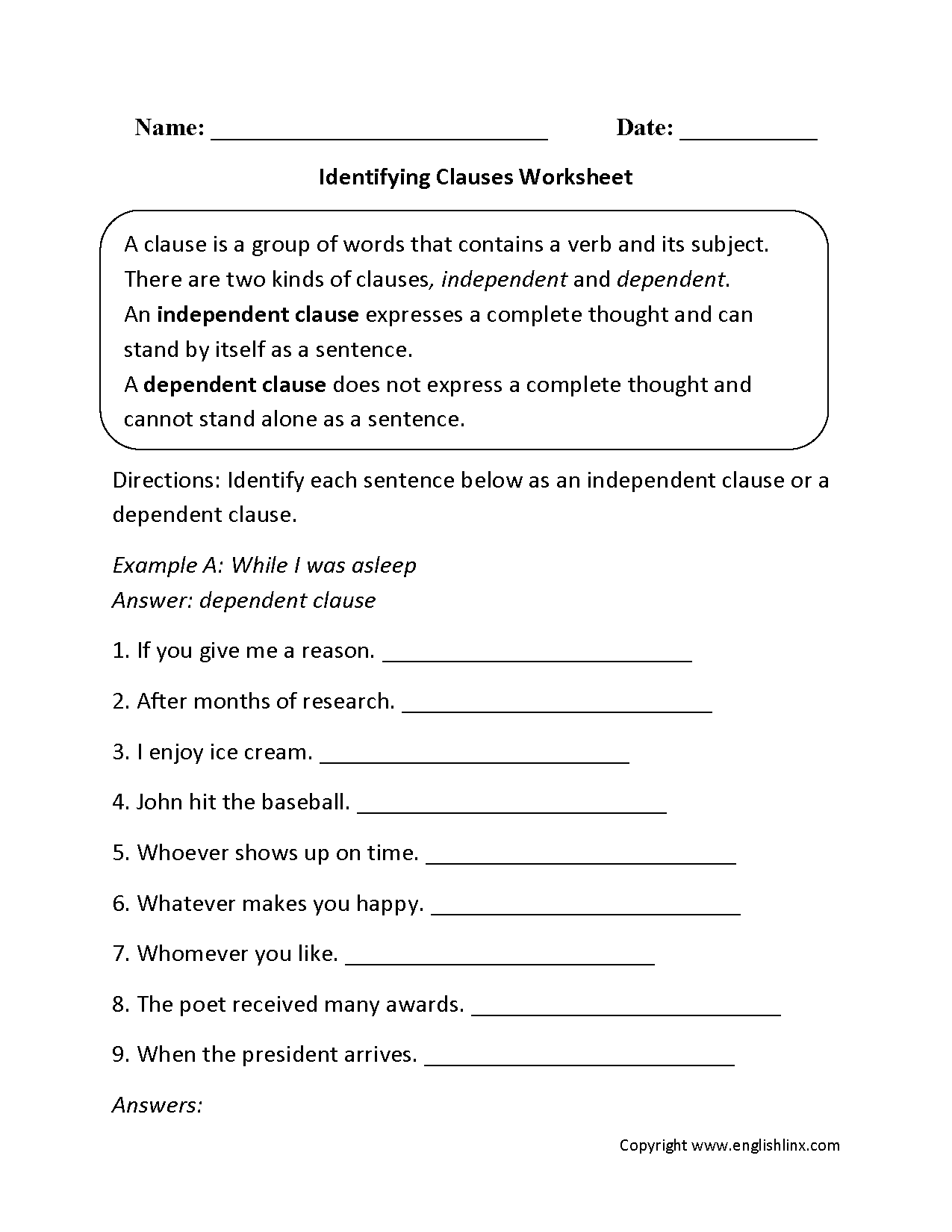
Mastering Sentence Structure: The Indispensable Role of Clauses Worksheets
In the intricate tapestry of the English language, sentences are the threads, and clauses are the fundamental knots that give them strength and meaning. Understanding clauses is not merely an academic exercise; it is the cornerstone of clear, effective communication, both in written and spoken form. For students and educators alike, navigating the complexities of independent and dependent clauses, as well as their various sub-types, can be a daunting task. This is where the strategic implementation of clauses worksheets becomes not just beneficial, but truly indispensable.
This comprehensive article will delve into the critical role of clauses in English grammar, explore the manifold benefits of utilizing clauses worksheets, discuss effective strategies for their deployment, and highlight the diverse range of exercises they offer to solidify grammatical understanding. By the end, it will be clear why these educational tools are a vital component in any robust language arts curriculum.
The Foundation: What Exactly Are Clauses?
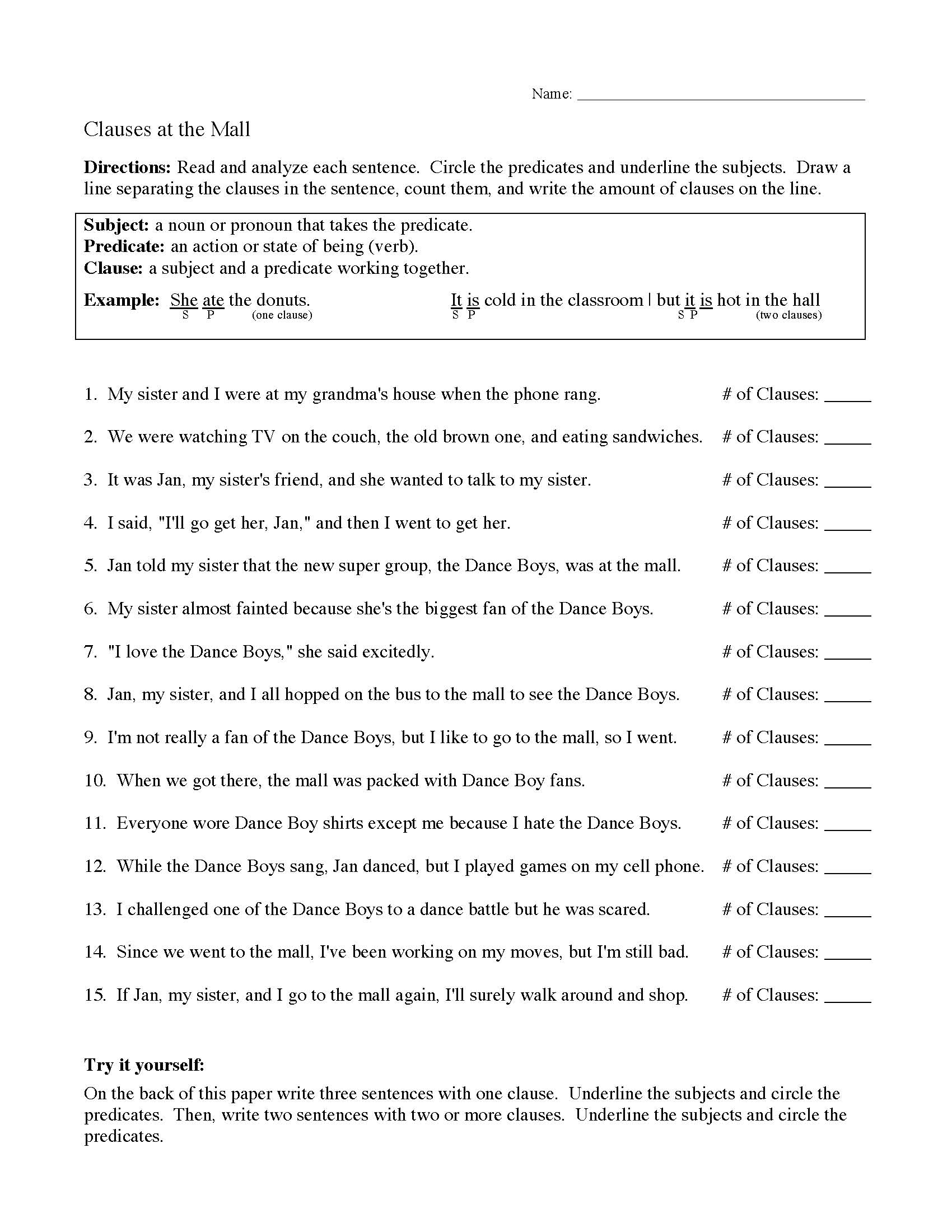
Before we can appreciate the value of clauses worksheets, it’s crucial to firmly grasp what a clause is. At its most basic, a clause is a group of words that contains both a subject and a predicate (which includes a verb). This simple definition distinguishes it from a phrase, which may contain a subject or a verb, but not both performing a complete action.
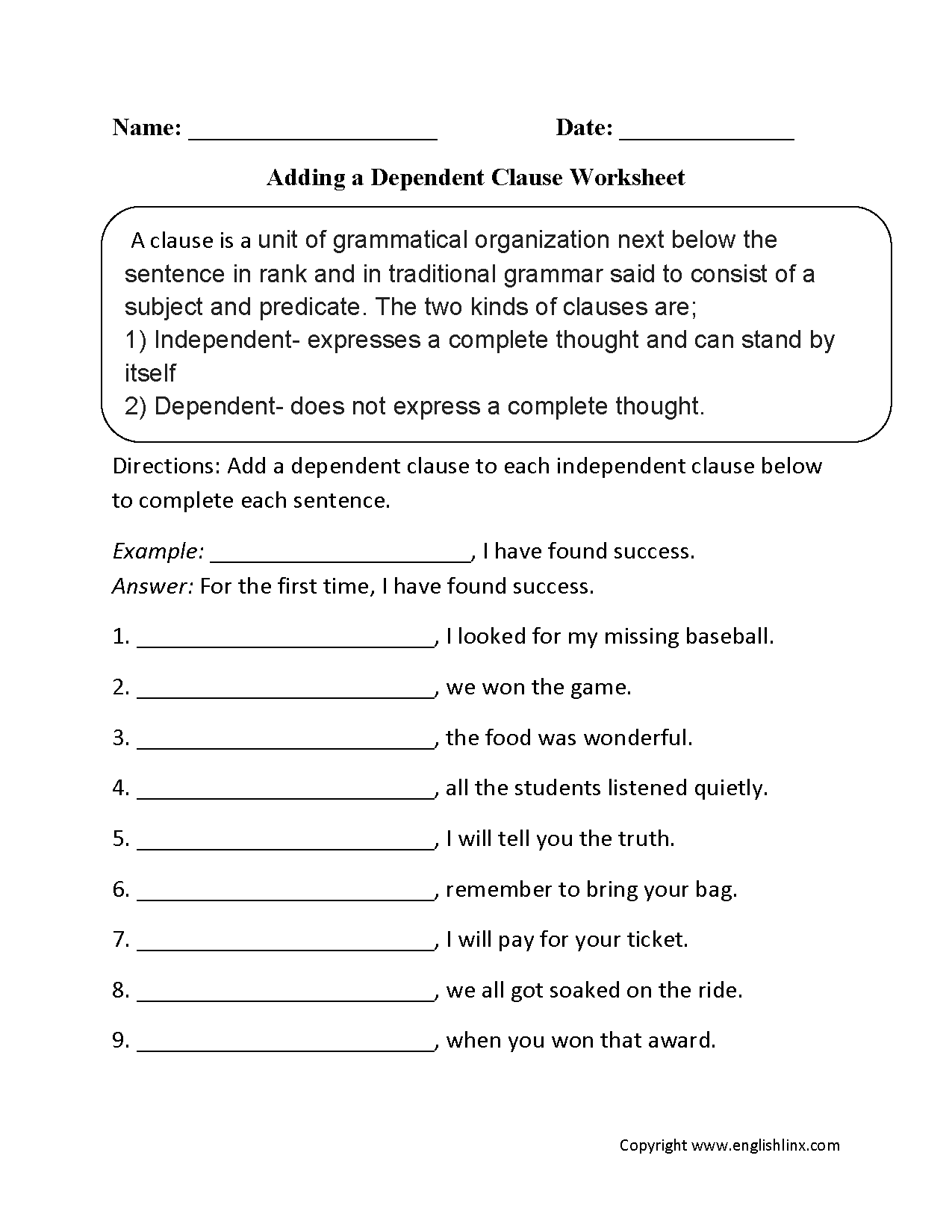
Clauses are primarily categorized into two main types:
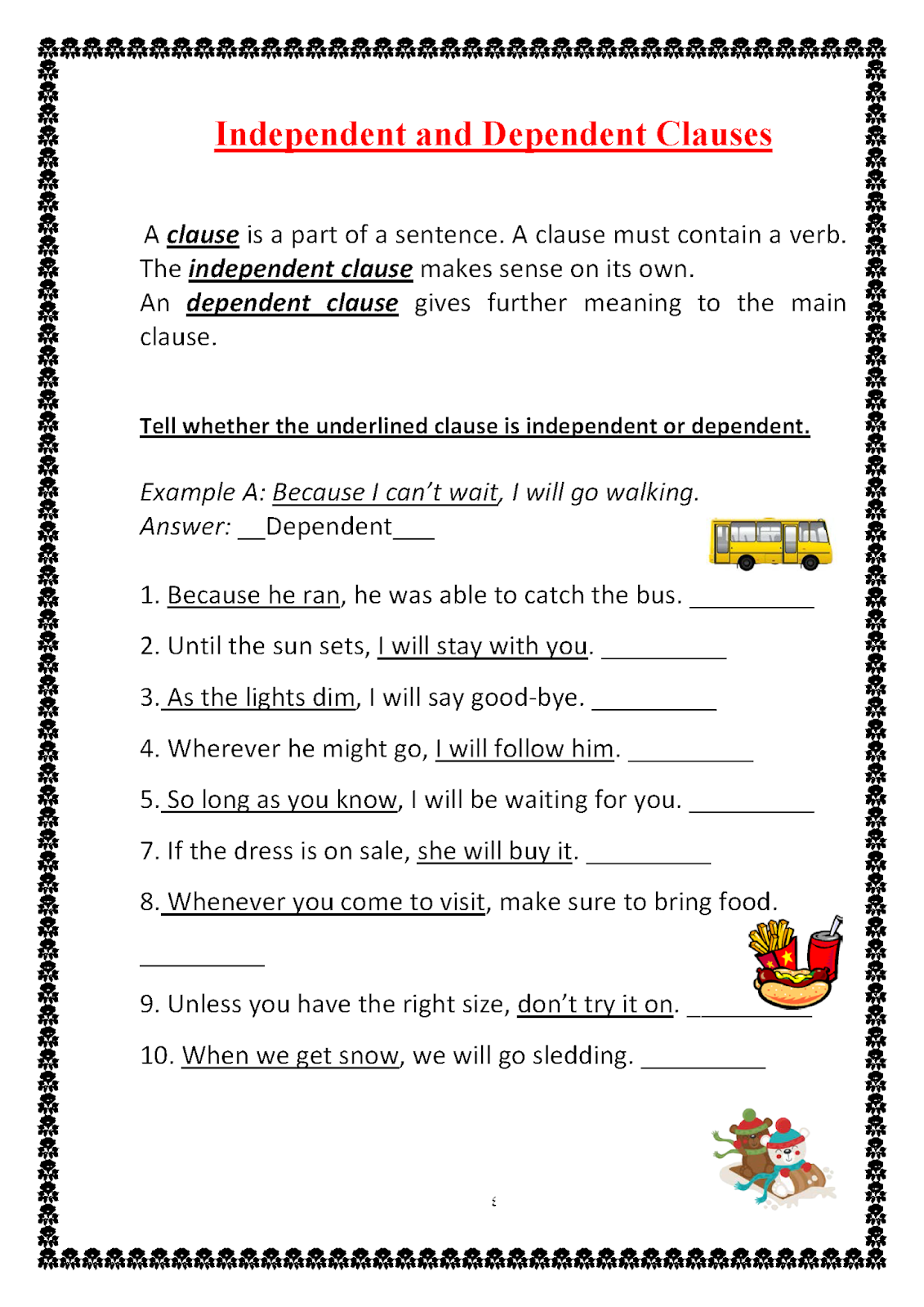
-

Independent Clauses (Main Clauses): These are complete thoughts. They can stand alone as a sentence because they express a full idea.
- Example: "The cat slept peacefully." (Subject: cat, Verb: slept)
-
Dependent Clauses (Subordinate Clauses): These are incomplete thoughts. They cannot stand alone as a sentence because they rely on an independent clause to make full sense. They are typically introduced by a subordinating conjunction (like because, although, when, if, while) or a relative pronoun (like who, which, that).

- Example: "Because the cat was tired." (This needs more information to be a complete sentence.)

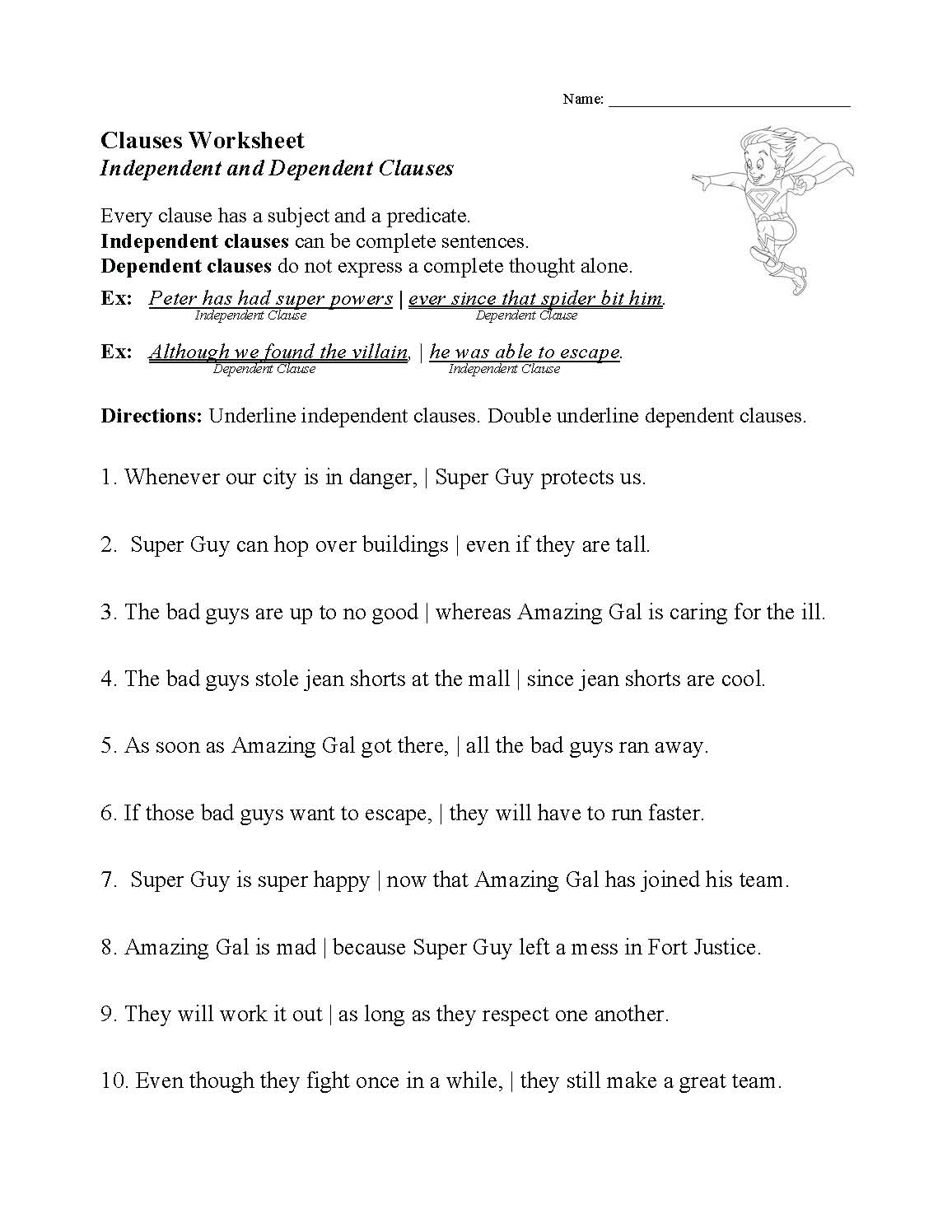

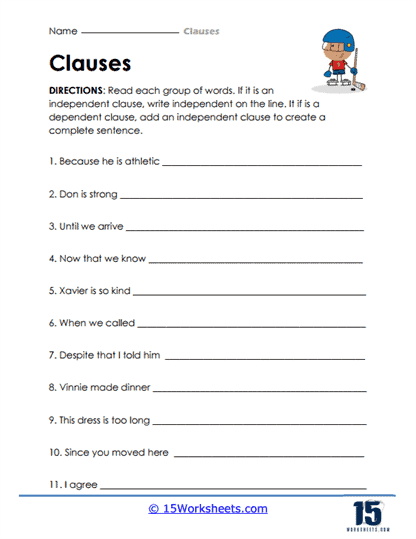
Within dependent clauses, there are further classifications based on their function within a sentence:
- Noun Clauses: Function as a noun in a sentence. They can be the subject, object, or complement.
- Example: "I know what you did last summer." (Object of the verb ‘know’)
- Adjective Clauses (Relative Clauses): Function as an adjective, modifying a noun or pronoun. They usually begin with relative pronouns.
- Example: "The book that I read yesterday was excellent." (Modifies ‘book’)
- Adverb Clauses: Function as an adverb, modifying a verb, adjective, or another adverb. They indicate time, place, manner, cause, condition, purpose, or result.
- Example: "Although it was raining, we went for a walk." (Modifies ‘went’)
Understanding these distinctions is the first step towards grammatical mastery, and it’s precisely where well-designed clauses worksheets begin their invaluable work.
Why Clauses Worksheets Are Indispensable for Learning
The theoretical knowledge of clauses, while necessary, often remains abstract without practical application. This is where clauses worksheets bridge the gap between understanding and mastery. Their benefits are multi-faceted:
- Practical Application and Reinforcement: Worksheets provide structured opportunities to apply grammatical rules. Students can identify, classify, and manipulate clauses, solidifying their understanding through repetition and varied contexts. This hands-on practice is far more effective than rote memorization.
- Identification of Knowledge Gaps: As students work through exercises, their strengths and weaknesses become apparent. Teachers can quickly pinpoint areas where students are struggling – perhaps confusing an adjective clause with an adverb clause, or failing to identify the subject in a complex clause. This allows for targeted instruction and remediation.
- Gradual Skill Development: Many worksheets are designed to progress in difficulty, starting with basic identification and moving to more complex tasks like combining sentences using different clause types. This scaffolding ensures students build their skills incrementally, preventing overwhelm.
- Preparation for Standardized Tests: Standardized tests often include sections on sentence structure, grammar, and mechanics. Regular practice with clauses worksheets hones the skills necessary to excel in these areas, improving test scores and academic confidence.
- Cultivating Analytical Skills: Dissecting sentences to identify clauses requires careful analysis. Students learn to look for subjects, verbs, conjunctions, and pronouns, developing a keen eye for grammatical structure. This analytical skill extends beyond grammar, aiding in critical reading and logical reasoning.
- Independent Learning: Worksheets allow students to work at their own pace, fostering independent learning and self-assessment, especially when answer keys are provided. This empowers students to take ownership of their learning journey.
Effective Strategies for Utilizing Clauses Worksheets
To maximize the impact of clauses worksheets, both educators and students should employ strategic approaches:
For Educators:
- Scaffolding Instruction: Introduce one type of clause at a time before moving to the next. Start with independent clauses, then dependent, then the various types of dependent clauses. Each new concept should be accompanied by relevant exercises.
- Variety is Key: Don’t rely on just one type of worksheet. Mix identification exercises with sentence combining, error correction, and creative writing prompts that require clause application.
- Provide Clear Instructions and Examples: Before assigning a worksheet, ensure students fully understand the task. Walk through a few examples together.
- Immediate Feedback: When possible, review worksheets together in class or provide timely, constructive feedback. This helps students correct misunderstandings before they become ingrained.
- Differentiation: Offer worksheets of varying difficulty levels to cater to diverse learning needs. Some students might need more basic identification, while others are ready for complex sentence construction.
- Connect to Real-World Text: After completing worksheets, encourage students to identify clauses in authentic texts (literature, news articles, essays). This shows them the practical application of what they’ve learned.
For Students:
- Active Engagement: Don’t just passively fill in blanks. Think about why an answer is correct or incorrect. Underline, circle, and annotate as you work.
- Review Concepts: Before starting a worksheet, quickly review the definitions and characteristics of the clause types being addressed.
- Utilize Examples: Pay close attention to any examples provided on the worksheet or by your teacher. They are often mini-lessons in themselves.
- Don’t Be Afraid to Make Mistakes: Mistakes are opportunities for learning. Identify where you went wrong and understand why.
- Ask Questions: If you’re stuck or confused, ask your teacher or a peer for clarification. Don’t move on with a misunderstanding.
- Self-Correction with Answer Keys: If an answer key is provided, use it wisely. Don’t just copy answers. Check your work, identify errors, and then try to understand the correct answer.
Common Exercises Found in Clauses Worksheets
The versatility of clauses worksheets is evident in the wide array of exercise types they offer:
- Identification and Underlining: Students are given sentences and asked to underline or highlight the independent and/or dependent clauses.
- Classification: After identifying clauses, students are often asked to label them (e.g., Independent Clause, Noun Clause, Adjective Clause, Adverb Clause).
- Sentence Combining: This is a crucial exercise where students are given two or more simple sentences and asked to combine them into one complex or compound-complex sentence using appropriate conjunctions or relative pronouns to form clauses.
- Completing Sentences: Worksheets might provide an independent clause and ask students to add a suitable dependent clause, or vice-versa.
- Writing Original Sentences: Students are given specific criteria (e.g., "Write a sentence containing an adverb clause of time" or "Write a sentence with a noun clause as the subject") and must construct their own examples.
- Error Correction: Students identify and correct sentences where clauses are incorrectly used, misplaced, or punctuated. This includes run-on sentences and sentence fragments.
- Multiple Choice: A common format for quick assessment, where students choose the correct clause type, the correct way to combine sentences, or the sentence with the correct clause structure.
- Transformations: Changing a dependent clause into a phrase, or vice-versa, to demonstrate understanding of sentence reduction and expansion.
Each of these exercise types contributes uniquely to a student’s comprehensive understanding of clause structure and function, ensuring a well-rounded grammatical foundation.
Finding Quality Clauses Worksheets
In the digital age, resources for clauses worksheets are abundant. High-quality worksheets can be found from various sources:
- Educational Websites: Many reputable educational websites offer free or subscription-based grammar worksheets. Look for sites known for their curriculum materials.
- Textbooks and Workbooks: Traditional grammar textbooks often come with accompanying workbooks filled with exercises.
- Teacher-Created Resources: Many experienced educators share their self-made worksheets online through platforms dedicated to educational resources.
- Online Libraries and Databases: Some academic institutions and libraries curate collections of educational materials.
When selecting clauses worksheets, look for:
- Clear and concise instructions.
- A variety of exercise types.
- An answer key for self-correction.
- Examples provided for each task.
- Content appropriate for the target learning level.
Conclusion
The journey to grammatical proficiency is multifaceted, requiring a blend of theoretical knowledge, practical application, and continuous reinforcement. In this journey, clauses worksheets stand out as an indispensable tool. They transform abstract grammatical concepts into tangible exercises, allowing students to actively engage with sentence structure, identify their strengths and weaknesses, and progressively build their command of the English language.
By providing structured practice, facilitating targeted feedback, and fostering analytical skills, these worksheets empower students to move beyond basic sentence construction to crafting nuanced, sophisticated, and grammatically sound prose. For educators, they are a flexible and effective resource for instruction and assessment. Ultimately, mastering clauses through the diligent use of these worksheets is not just about passing a grammar test; it’s about unlocking the ability to communicate with precision, clarity, and confidence, a skill that is invaluable in every aspect of life.
